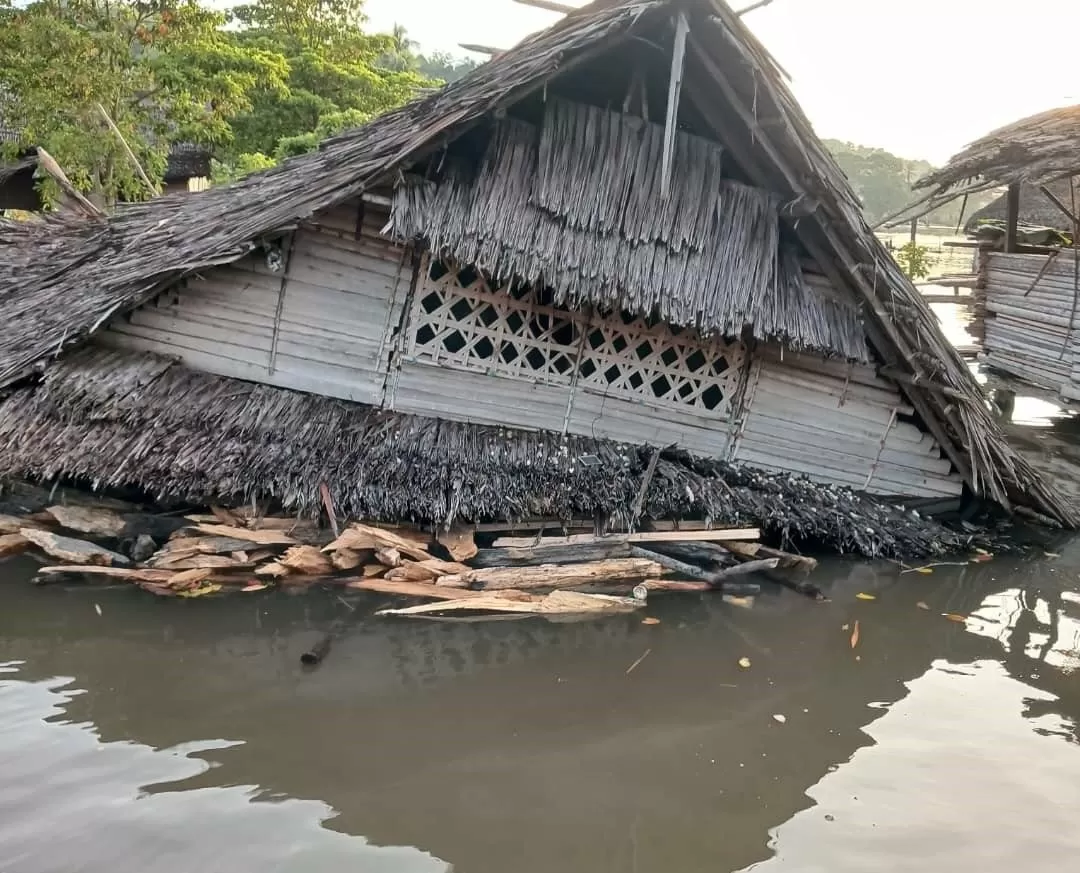A powerful magnitude 6.9 earthquake struck Papua New Guinea on Monday, leaving a trail of destruction and claiming the lives of at least five people. The disaster has also left an estimated 1,000 homes destroyed, leaving many families without shelter.
The earthquake, which hit the country’s remote highlands region, has caused widespread panic and devastation. The epicenter of the quake was located in the Southern Highlands province, about 89 kilometers southwest of the town of Porgera. The tremors were felt as far as the capital city of Port Moresby, located over 600 kilometers away.
According to local officials, the death toll is expected to rise as rescue teams continue to search for survivors in the affected areas. The disaster has also left many injured and displaced, with reports of people being trapped under the rubble of collapsed buildings.
The disaster has also caused significant damage to infrastructure, with roads and bridges being destroyed, making it difficult for rescue teams to reach the affected areas. The lack of access to these remote regions has also made it challenging to assess the full extent of the damage and provide aid to those in need.
The earthquake has also triggered landslides, adding to the already dire situation. Many villages have been completely cut off from the outside world, leaving the residents stranded and in need of urgent assistance.
The government of Papua New Guinea has declared a state of emergency in the affected regions and has called for international aid to help with the rescue and relief efforts. The country’s Prime Minister, Peter O’Neill, has also urged the citizens to remain calm and to support each other during this difficult time.
The disaster has once again highlighted the vulnerability of Papua New Guinea to natural disasters. The country is located in the Pacific Ring of Fire, an area known for its high seismic and volcanic activity. This makes it prone to earthquakes, volcanic eruptions, and tsunamis.
Despite the devastation caused by the earthquake, the people of Papua New Guinea have shown incredible resilience and strength in the face of this disaster. Communities have come together to help each other, and many have opened their homes to those who have lost everything.
The international community has also responded quickly, with countries such as Australia, New Zealand, and the United States offering their support and assistance. The United Nations has also pledged to provide aid to the affected regions.
In times like these, it is heartwarming to see the world come together to help those in need. The outpouring of support and generosity from individuals and organizations is a testament to the human spirit and our ability to unite in times of crisis.
As the rescue and relief efforts continue, it is crucial for us to remember that the road to recovery will be long and challenging. The affected communities will need our support and assistance in rebuilding their lives and homes.
We must also take this disaster as a reminder to always be prepared for such events. It is essential for governments and communities to invest in disaster preparedness and response strategies to minimize the impact of natural disasters.
In the midst of this tragedy, let us not forget the strength and resilience of the people of Papua New Guinea. They have faced many challenges in the past and have always emerged stronger. With the support of the international community, we can help them rebuild and recover from this disaster.
Let us also remember the lives lost in this earthquake and keep their families and loved ones in our thoughts and prayers. Together, we can overcome this disaster and help the people of Papua New Guinea rebuild their homes and communities.





![Complete BritRail Pass Guide [Types, How to Use It, Pros + Cons]](https://inside-news.uk/wp-content/uploads/2025/06/00221EB4-BCA2-4DBB-6CD4-83DBC37D71FA-120x86.webp)















